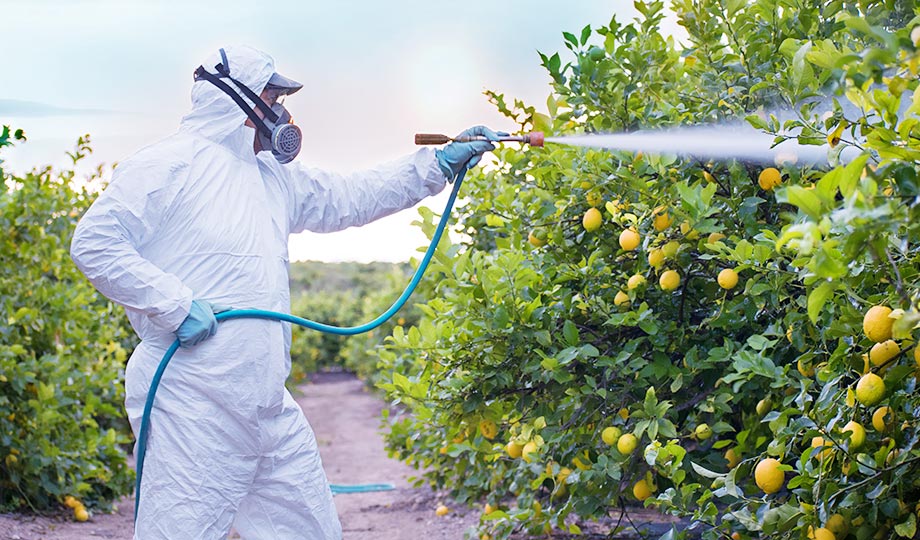
Please fill in the details below:


Fungicides are substances that are used to eliminate or prevent the growth of fungi or their spores. Fungi include but are not limited to mould, mildew, blights, and rusts. Fungi cannot produce their own carbohydrate food as they lack chlorophyll and feed on living plants or dead organic matter. Fungi are a big concern in agriculture as most crop diseases are caused by fungi. The effect of fungi and fungal plant diseases has been recorded even in early history but their cause was not identified. It was only in 1861 that Anton de Bary, the father of plant pathology, identified a fungus that was causing rot in potatoes and in 1885 that a fungicide was developed to inhibit its growth. The major boost to fungicide development was in the 20th century. Many new types of fungicides were developed and widespread use was adopted, providing protection from many plant diseases for the first time in history. As an alternative to conventional fungicides, biofungicides, which are formulations of living microorganisms, are also being adopted as a method to control the growth of fungi.
Fungi can be difficult to control. They produce a massive quantity of spores which can spread via rain or wind over long distances to settle in favourable conditions such as surfaces of leaves, stems or fruit. Fungi can grow through and between plant cells, withdraw nutrients, and even in some cases produce toxins that kill the plants. Fungi can also thrive in crop debris and infect the next cycle of crops.
Fungicides for plants can prevent the fungi spores from growing and eliminate the fungi that might already exist to protect the health of the crops. Modern fungicides have been developed to specifically target fungi and do a lot more. Synthetic chemical fungicides can provide protection without being absorbed or translocated by the plant. Fungicides also make it possible to provide protection against a wide variety of fungi. Some systemic fungicides have also been developed that can be absorbed by the plant and have a therapeutic effect by curing plant diseases. Apart from synthetic fungicides, biofungicides can also be used to control certain types of fungi and are especially useful for organic production. Fungicides are a necessary part of today's agricultural sector as without it production would be severely impacted as there would be no protection from diseases.
The classification of fungicides for plants can be done in many ways including but not limited to their activity, mobility in the plant, and role in the protection of plants.
UPL continues to develop biofungicides and fungicides for plants and research new technologies that can provide added advantages like easy dissolution, dispersion, and complete coverage. We are also researching to make our fungicides more effective so lower dosages are required for crop protection.
The use of fungicides and biofungicides provides many benefits. Some advantages of fungicides include:
Before fungicides were developed, plant diseases could spread uncontrollably and threaten the crop yield, and in some cases, even wipe out the entire crop. With the use of fungicides, it is possible to control the loss of crops.
Some other methods of controlling fungi can damage crops or affect the quality of the crops. Fungicides provide an effective way of killing the fungi that damage the crops without affecting the crops themselves.
Fungicides can not just eliminate fungi but also prevent them from growing. Many synthetic fungicides are capable of providing broad-spectrum protection against multiple species of common fungi.
DISCLAIMER
“UPL and its subsidiaries have made every attempt to ensure accuracy of the information provided on this website. However, this is a global webpage with access to different geographies for wider reach and greater awareness of UPL. In the course of doing the same, UPL has used Weglot translator plugin to cover the language of this website from English to select regional languages.
UPL therefore, does not accept any responsibility or liability on the nature, standard or the accuracy of the translation and cannot take responsibility for any type of inaccurate contextual meaning in the event of a mismatch from English to a regional language.”